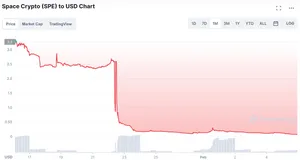Part of this collection's draw has been the promise that "you own the art". However, the artwork is released under the CC0 license, which dedicates the work to the public domain — that is, any ownership of the work in a copyright sense no longer exists.
Howlerz NFT drop goes incredibly badly, with heavy botting, a poorly-implemented contract, and buyers falling for a scam contract
Crypto and NFT scammers take advantage of the invasion of Ukraine to boost their grifts
Ukraine-themed NFT projects have also sprung up all over the place, promising to donate portions of proceeds, with very few avenues to distinguish the legitimate from the scams. Some existing NFT projects have created Ukraine-themed items to add to their collections. Other NFT projects that have nothing to do with Ukraine have tried to tempt buyers by claiming they will donate a portion of proceeds (5%, in one case) to Ukrainian war relief funds. Individual sellers have also tried to use the crisis to increase the sales of NFTs they own, promising to donate their profits.
Needless to say, my advice if you're hoping to donate to relief would be to skip the cryptocurrency and NFTs altogether and pick any of the many verified relief funds out there.
Pixelmon raises $70 million only to reveal hilariously bad NFTs
Although the project lead wrote on the Discord that they had "made a horrible mistake" but that they would "completely revamp and redesign" the NFTs, the project appeared to be a cash grab. On the night of the reveal, 1,000 ETH ($2.8 million) had already been transferred out of the project and split among various addresses. One of the recipients who received 400 ETH ($1.1 million) immediately went on a shopping spree, buying various big-ticket NFTs with their windfall.
Bitconnect founder indicted by federal grand jury on charges of orchestrating a global Ponzi scheme
- "BitConnect Founder Indicted in Global $2.4 Billion Cryptocurrency Scheme", United States Department of Justice
The Associated Press continues to mishandle its NFT fiasco with mass Discord bans and scrubbing of messages
Nelson Mandela's paintings from prison to be sold as NFTs
The Associated Press wants to sell you an NFT of migrants adrift at sea
However, on February 24 they announced that their newest NFT would show a short, top-down video of around fifty migrants crammed into a small inflatable boat, adrift at sea in the Mediterranean. Any goodwill the AP might have had for their NFT project was likely shattered by their choice to monetize a video of human suffering. The already horrific NFT announcement was particularly ill-timed, given its juxtaposition on many Twitter feeds amongst news of Russian military action against Ukraine. The Associated Press deleted the announcement tweet four hours later.
Founders of BitMEX crypto exchange take guilty plea, pay $10M fine for failing to implement an anti-money laundering program
In March, the third co-founder, Sam Reed, also pled guilty and agreed to pay a $10 million fine. In August, top BitMex employee Gregory Dwyer entered a guilty plea and agreed to pay a $150,000 fine.
BitMEX had attempted to evade sanctions by claiming they didn't serve customers in the United States, though in reality they served thousands of U.S. customers and marketed in the U.S. At one point, when an early investor inquired as to why an investment in the company hadn't triggered a report to regulatory authorities, Delo responded with a meme of a man smiling, superimposed with the text "Incorporated in Seychelles, come at me bro". Hayes and Delo face a maximum sentence of five years in prison as a result of this plea. The exchange had in August paid $100 million to settle a separate lawsuit from the Commodity Futures Trading Commission, in an agreement which had also required them to implement proper blocks to prevent U.S. customers from using the service.
- "Founders Of Cryptocurrency Exchange Plead Guilty To Bank Secrecy Act Violations", The U.S. Attorney’s Office, Southern District of New York
- "BitMEX to Pay $100 Million to Resolve Regulator’s Lawsuit Over Crypto Derivatives Trading", The Wall Street Journal
- "Third BitMEX Founder Pleads Guilty to Anti-Money-Laundering Violation", The Wall Street Journal
- "Top BitMEX Employee Pleads Guilty to U.S. Charge", The Wall Street Journal
Space Crypto game surprises its player base with new, disadvantageous tokenomics
- Space Crypto (SPE) to USD Chart, CoinMarketCap
- Tweet by mikacrypto__







